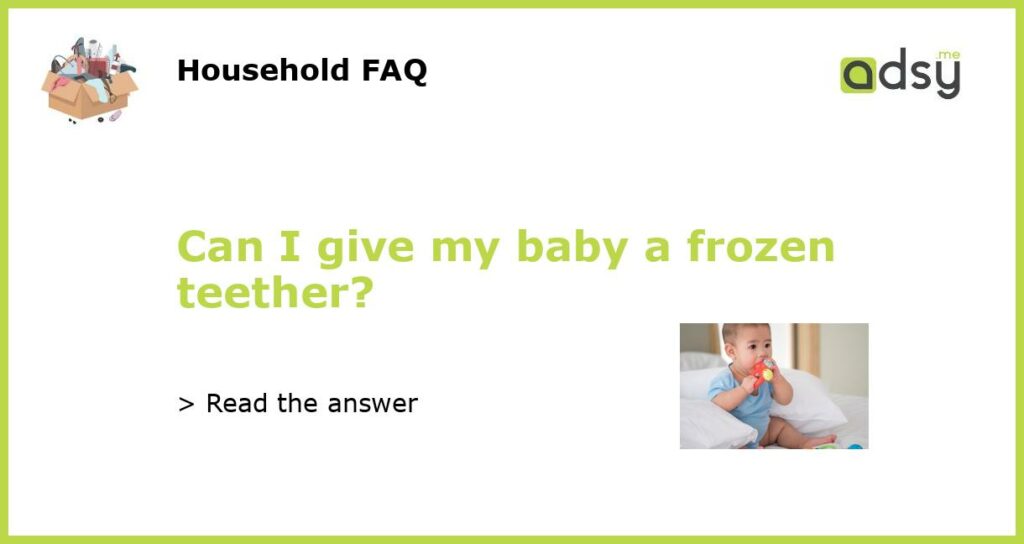Yes, you can give your baby a frozen teether
When your baby starts teething, it can be a challenging time for both them and you. Babies experience discomfort and pain as their teeth start to emerge, and they often become restless and irritable. One solution many parents turn to is a frozen teether. This popular teething tool can help soothe your baby’s gums, alleviate pain, and provide a comforting sensation. Read on to learn more about using a frozen teether for your baby.
The benefits of a frozen teether
A frozen teether can provide various benefits for your baby during the teething process. Here are some reasons why you may consider using one:
1. Pain relief: The cold temperature of a frozen teether can numb the gums and reduce pain and discomfort. It can provide your baby with immediate relief and help them feel more comfortable during teething.
2. Soothing sensation: Chewing on a cold teether can provide a soothing sensation for your baby. It can help distract them from the teething pain and provide a sense of relief.
3. Reduces inflammation: Frozen teethers can help reduce gum inflammation. The cold temperature can constrict blood vessels and decrease swelling, which can be beneficial during the teething process.
Choosing a safe frozen teether
Before giving your baby a frozen teether, it’s important to ensure that it is safe. Here are some guidelines to follow:
1. Choose a teether specifically designed for freezing: Not all teethers are suitable for freezing. Look for teethers that are specifically labeled as safe for freezing, as they are made with materials that can withstand low temperatures.
2. Check for BPA-free and non-toxic materials: Make sure the teether you choose is made from BPA-free and non-toxic materials. This is important since your baby will be chewing on the teether and may potentially swallow small pieces.
3. Inspect for any damage: Before freezing the teether, check it for any signs of damage or wear and tear. Discard any teethers that are cracked, broken, or have loose parts, as they can be a choking hazard.
Proper use of a frozen teether
Using a frozen teether correctly is crucial to ensure safety and effectiveness. Here are some tips for proper use:
1. Don’t freeze the teether for too long: Follow the manufacturer’s instructions for freezing time. Overfreezing the teether can make it too hard and potentially injure your baby’s gums.
2. Monitor your baby: Always keep an eye on your baby while they are using a frozen teether. Check for any signs of discomfort or choking, and remove the teether if necessary.
3. Offer variety: It’s a good idea to have multiple frozen teethers on hand. This way, you can rotate them and always have a clean and frozen teether ready for your baby.
Alternatives to frozen teethers
While frozen teethers can be effective, they may not work for every baby. If your baby doesn’t seem to enjoy or benefit from a frozen teether, here are some alternatives you can try:
1. Chilled teether: Instead of freezing the teether, you can refrigerate it. This will provide a similar soothing sensation without the extreme coldness of a frozen teether.
2. Silicone teether: Silicone teethers are another popular option. They are soft and gentle on your baby’s gums and can be chilled for added relief.
3. Teething toys: There are various teething toys available on the market that can provide relief for your baby. Look for toys with different textures and shapes to keep your baby engaged and interested.
Remember to consult with your baby’s pediatrician or healthcare provider for personalized advice and recommendations on teething remedies. They can provide guidance based on your baby’s specific needs and preferences.






